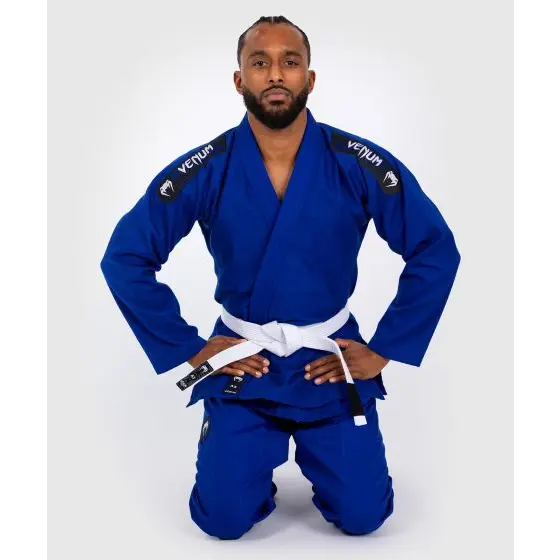
BJJ Gear Guide:
Share
BJJ Gear Guide: What You Really Need to Start Training Brazilian Jiu-Jitsu
Thinking about starting Brazilian Jiu-Jitsu (BJJ)? Whether you're training gi or no-gi, knowing what gear you need—and what to avoid—can make your first classes smoother, safer, and way more enjoyable. This beginner-friendly guide breaks it all down so you can hit the mats with confidence.
Essential Gear to Start BJJ
Before you show up to your first class, here’s the gear that every BJJ beginner should consider:
1. Rashguard
A good rashguard is a must for no-gi training and can be worn under your gi as well. It protects your skin from mat burn, rashes, and bacteria while providing compression that supports your muscles.
Tip: Choose a rashguard with reinforced seams and a snug fit—it should feel like a second skin without cutting off circulation.
2. BJJ Shorts or Spats
You’ll need grappling-specific shorts (no zippers or buttons) or spats for full-leg protection. These allow free movement without risking injury to you or your training partners.
3. Mouthguard
BJJ is a contact sport, and accidental knocks to the face can happen—even in beginner classes. A boil-and-bite mouthguard is a cheap way to protect your teeth and jaw.
4. Groin Guard (Optional for Men)
While not required at most gyms, some men prefer the added protection, especially during live rolling.
5. Knee Pads or Elbow Sleeves (Optional)
If you have previous joint injuries or want added protection, compression sleeves or light pads can help.
Gi vs. No-Gi: What’s the Difference?
Gi Training involves wearing a traditional kimono-style uniform. You’ll grip the sleeves, collar, and pants during techniques.
No-Gi Training is done in rashguards and shorts—no heavy clothing, no grips on clothing, just body control.
Both styles are awesome, and many students train in both! For beginners, ask your gym which format they offer first.
Choosing the Right Rashguard
Not all rashguards are created equal—especially when it comes to BJJ. Here's what to look for:
- Material: Moisture-wicking, anti-bacterial fabric
- Fit: Snug but flexible—look for four-way stretch
- Seams: Flat-lock stitching prevents chafing and tearing
- Sleeve Length: Long sleeves for more protection; short sleeves for a cooler feel
- Style: Bonus points if it looks awesome (and ours do 😎)
✅ Many of our rashguards are IBJJF legal for competition, too.
👉 Explore BJJ Rashguards for Men, Women & Kids
What to Avoid as a Beginner
It’s easy to make gear mistakes early on—here are a few to steer clear of:
- Cotton T-shirts: They’ll stretch, rip, and hold sweat (and bacteria). Rashguards are worth the investment.
- Cheap MMA shorts with zippers or pockets: These can scratch or injure your training partners.
- Ill-fitting gear: Too tight = restriction. Too loose = grips and accidents.
Always check the size chart and consider sizing up if you’re between sizes.
Extra Tips for BJJ Beginners
- Wash your gear after every session—this helps prevent skin infections and keeps your training partners happy.
- Have a backup rashguard if you’re training multiple days a week.
- Don’t overthink it—just show up and train! The best gear in the world can’t replace time on the mat.
Ready to Roll?
Whether you’re training no-gi, under a gi, or just looking for high-quality gear to start your BJJ journey, we’ve got you covered.
👉 Shop Our BJJ Rashguards Collection
Train hard. Stay protected. Look good doing it.
